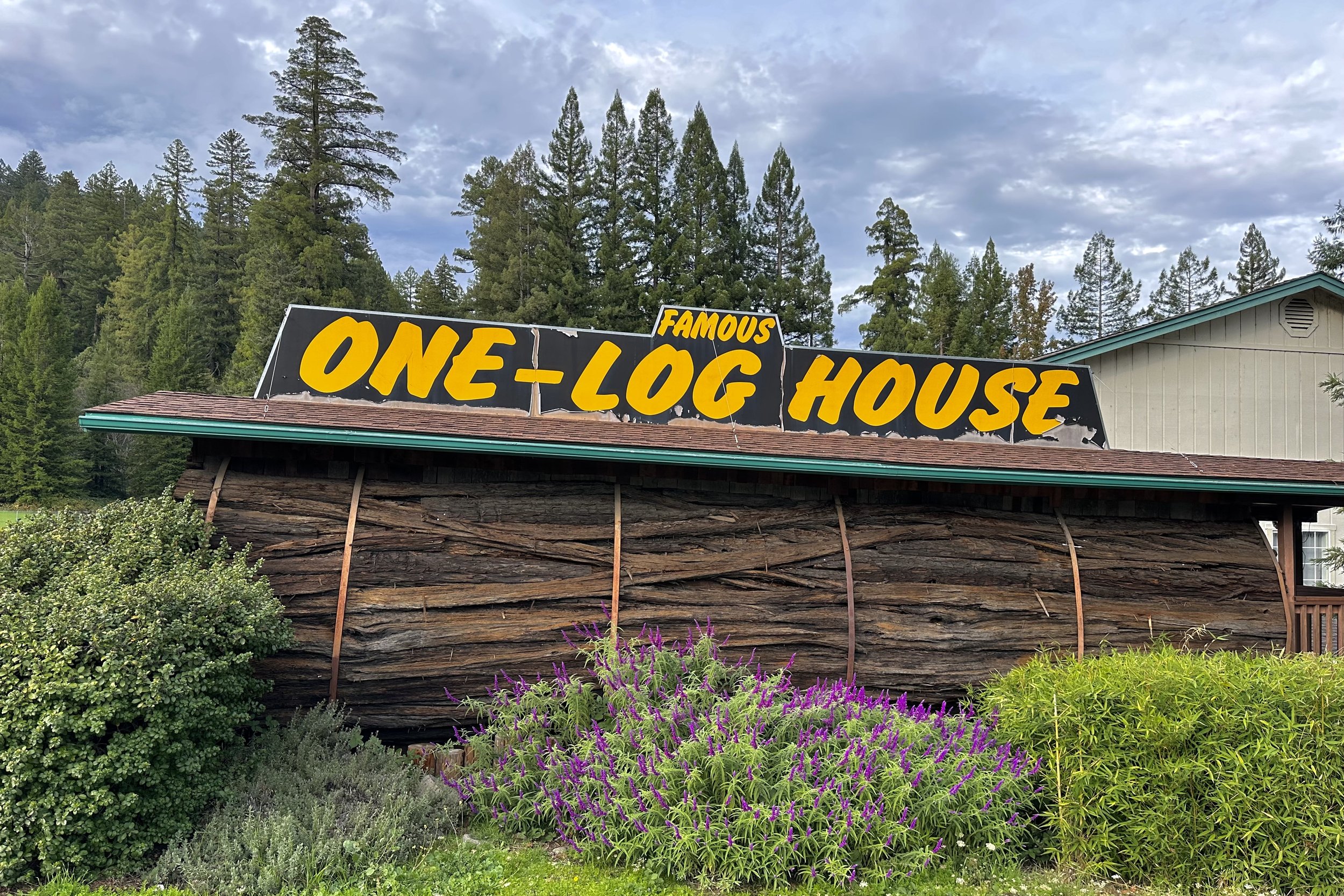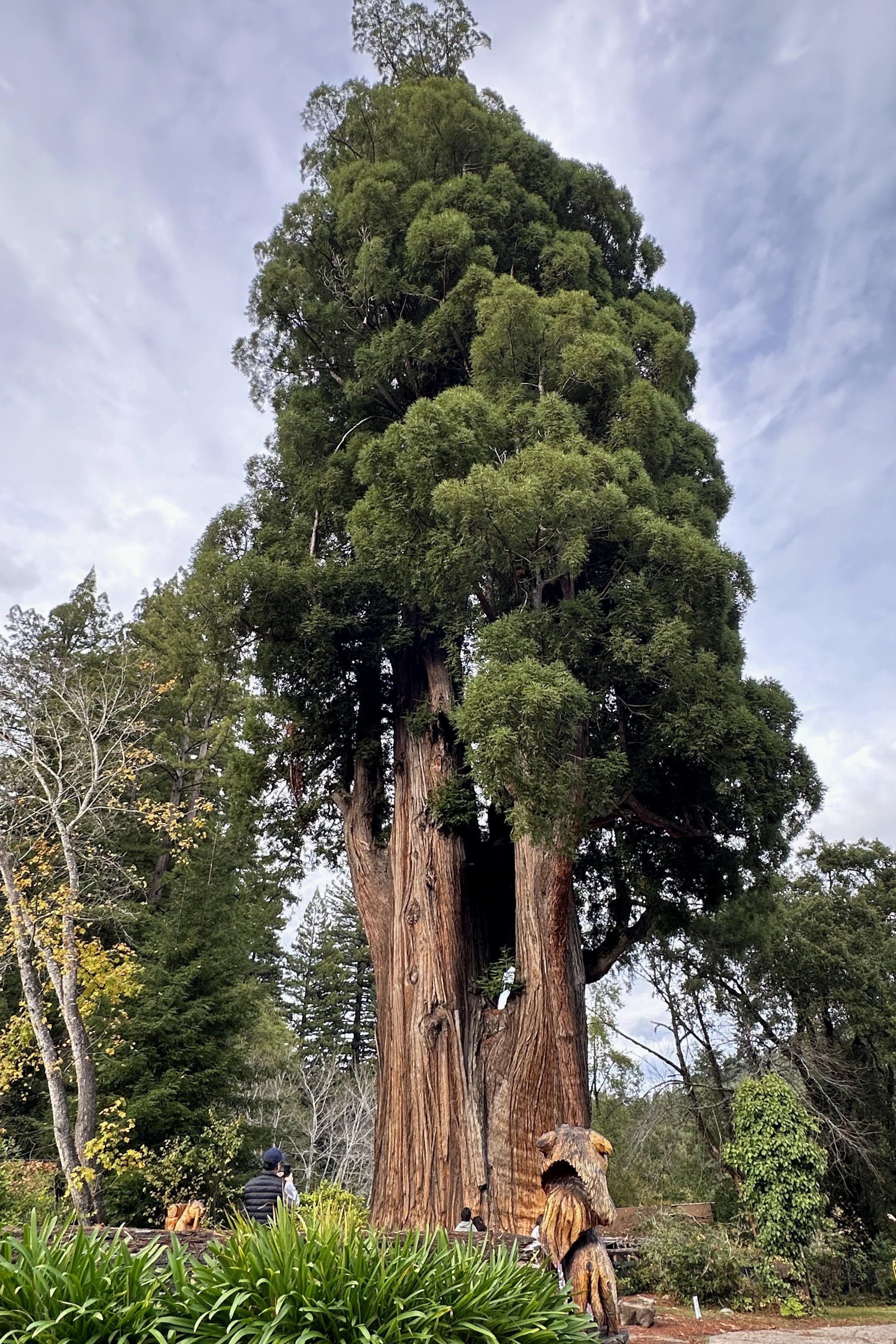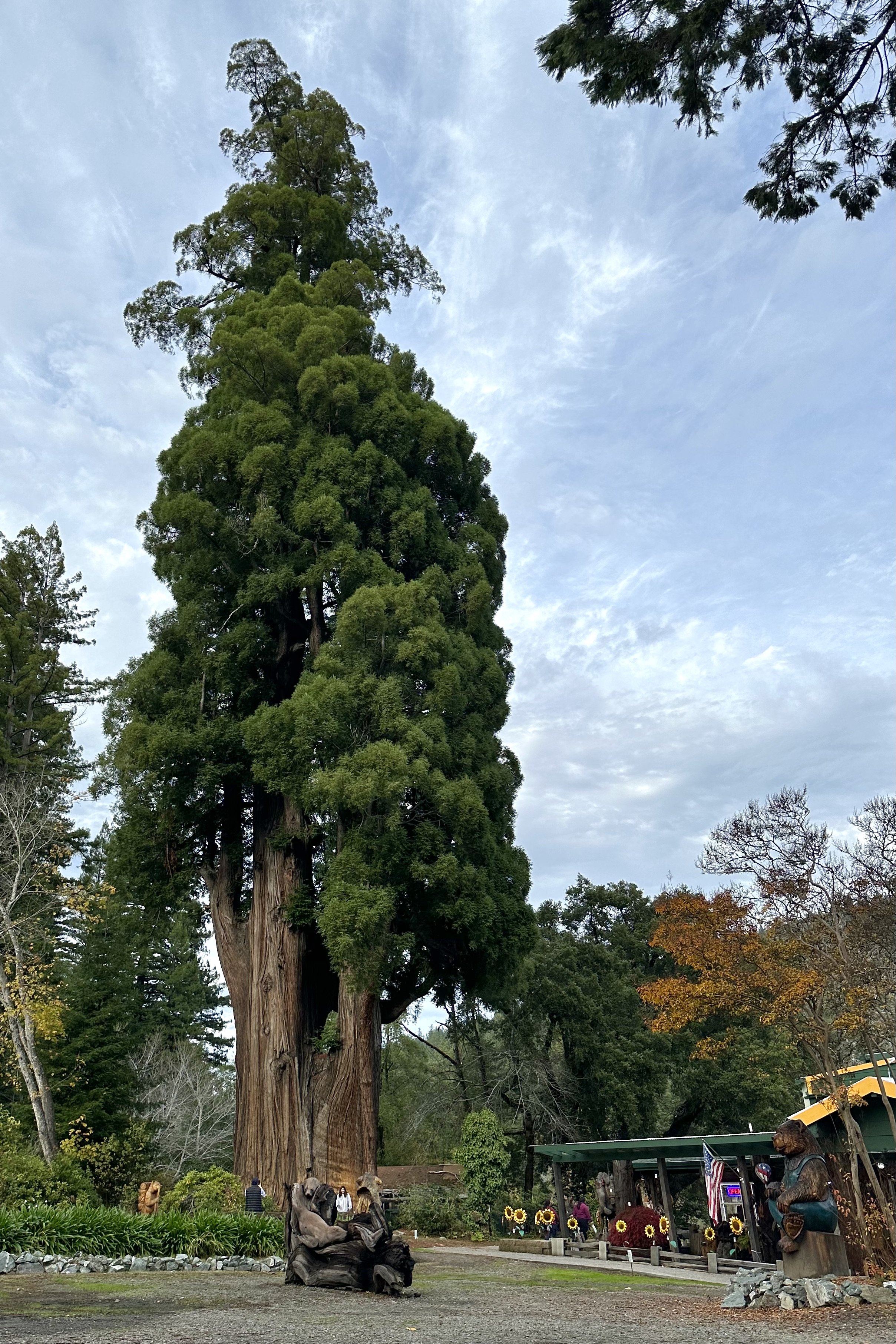
One Log House & Grandfather Tree
The One Log House was created in 1946 out of a 2,000 year old, 40 ton Redwood Tree log before it toured the country. It’s permanent home is now here in Bear Meadow next to the very old and picturesque Grandfather Tree.
The Grandfather Tree is just north of the Richardson Grove State Park Redwoods forest and is 245 feet tall but it has one of the largest tree trunks on the Redwood Highway at 24 feet in diameter and 55 feet in circumference.
The Bear Meadow also has a gas station, a gift shop, and an espresso bar.
See below for more information on the Coastal Redwoods.




Sequoia sempervirens aka, the Coast Redwoods are the tallest living trees in the world. They can reach over 300 feet tall and plenty of em do in the State and National Forest area. Th oldest known tree is 2,200 years old. Surprisingly though, trees only an inch in diameter can be 30 years old and many of the trees can grow 200 feet in less than a hundred years. The tallest tree found so far is 367.5 feet tall, which really can’t be imagined or even photographed well. It’s just something you’ve got to see in person. The Redwoods are naturally resistant to insects and they make great building materials for homes and furniture, which is why they were cut down so egregiously. More are grown than are harvested, thankfully. Redwoods are also extremely old. I’m talking 110 million years old which is an amazingly long time to live on this planet.
The area receives over 80 inches of rain a year so it’s bound to be a little moist, especially with the fog that will roll in or sometimes stay put for days. All that moisture is necessary for the trees that make this place special. And it helps with the moody atmosphere of the beautiful landscape.
The moisture’s also necessary for the amazing Banana Slug which needs a wet world just to survive. The Banana Slug is one of the largest slugs in north America at up to 10 inches long. They can travel a whopping 6 and a half inches per minute… okay, that’s actually impressive for a slug. In the Redwood forests, they’ll eat the saplings of all other plants and trees on the forest floor but they’ll leave the Redwood saplings alone so they have a symbiotic relationship with the giant Redwoods. The tall trees then create a moist and shaded environment which the slug needs to survive and get around.
Also, be on the lookout or, rather, have your ears open to the haunting sound of the Varied Thrush. The bird lives high in the trees and its eerie call is quite alien sounding. Which makes sense on account of the Redwoods being Endor, the home of the Ewoks.
The area is also surprisingly seismically active, which is because it’s the place where the three tectonic plates meet; the North American Continental Plate, the Gorda Plate, and the Pacific Plate. This seismic activity is most pronounced at Cape Mendocino. Cape Mendocino is reached by the amazing Lost Coast Highway.
The American Indian Sinkyone people who historically lived here for a couple thousand years, speak an Athabaskan language. Which is very closely related to the Apache and Navajo languages of the American Southwest. I explain the possible reasons for that in my upcoming Apache series, so stay tuned. The Sinkyone American Indian People’s trade goods have been found as far as the Eastern coast.
When the Europeans arrived in the 1850s, the settlers cleared the trees and forests in droves to make way for… farms. But then the lumber industry became vital. I’m much more okay with the idea of using the wood as opposed to clearing it for farmland. In reality though, the entirety of California is covered in cattle land, it seems. Even in the beginning though, the Redwood trees were seen as more valuable and significant alive. By 1918, the Save the Redwoods League was formed to do just that. And thank goodness they did.
